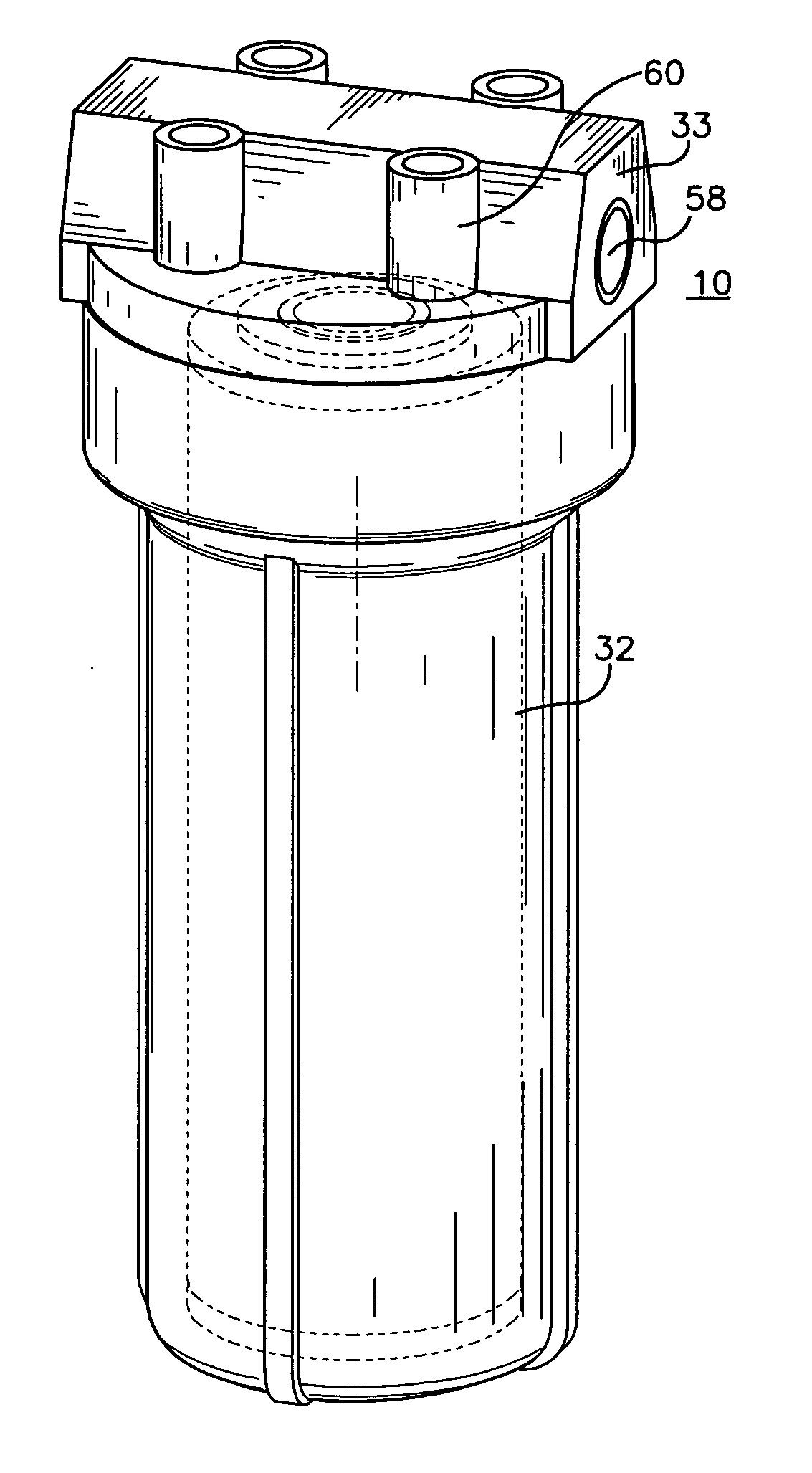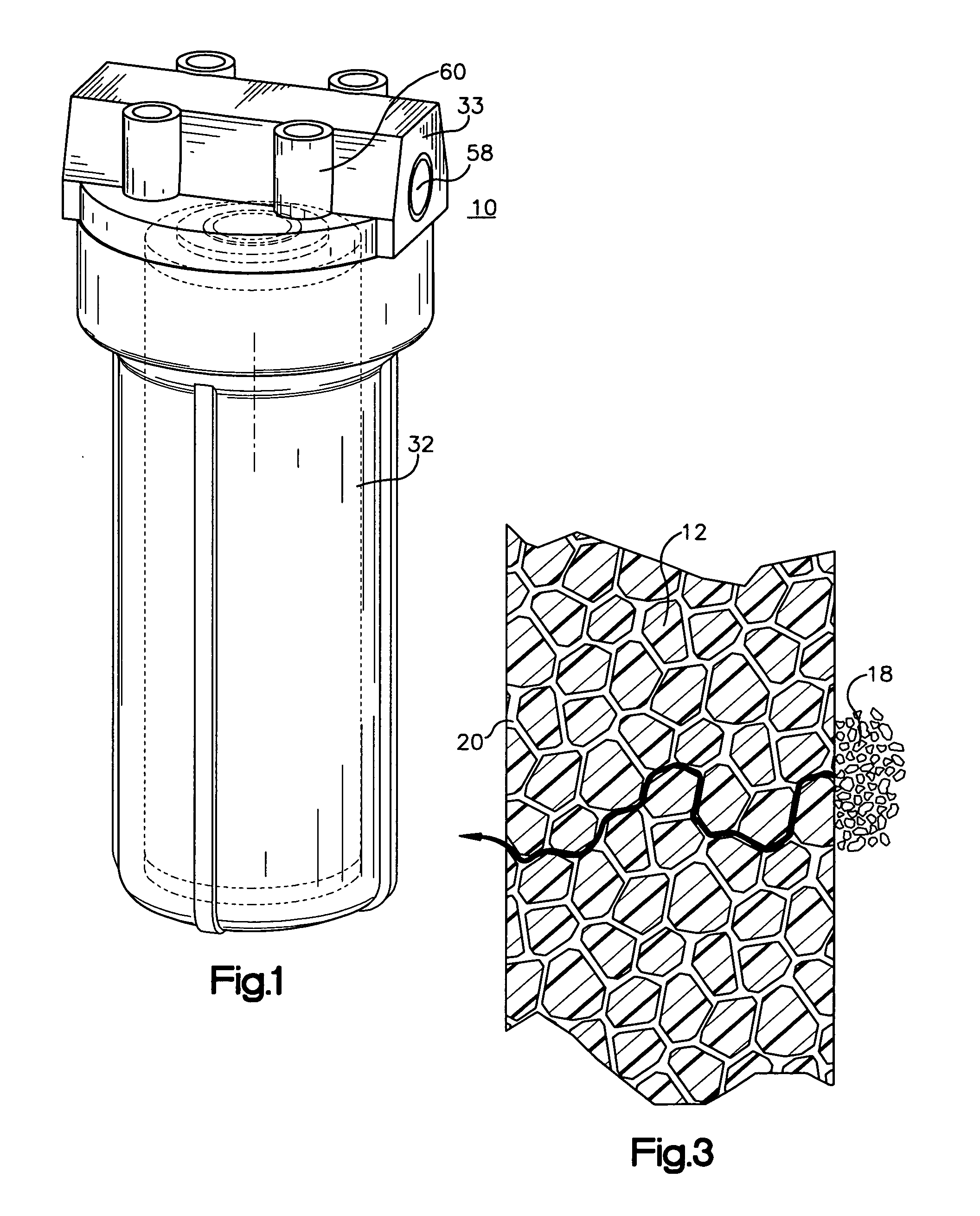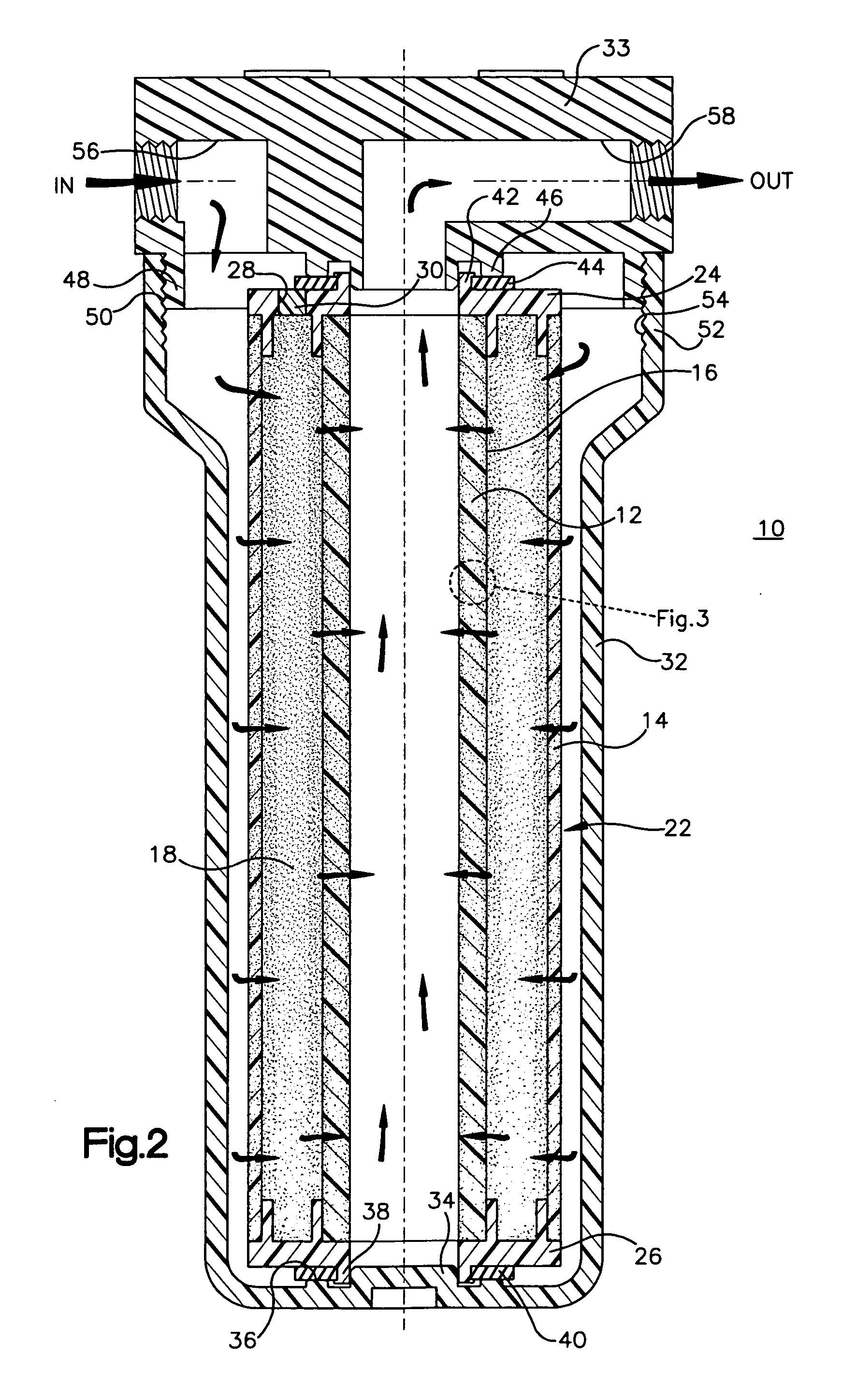Treatment of liquid using porous polymer containment member
a porous polymer and containment member technology, applied in the field of treating liquid, can solve the problems of inability to make screens to contain small particles of media, and inability to manufacture membranes and filter paper robustness, so as to avoid the fabrication cost and/or limited strength of membranes, reduce the cost of manufacturing and operation, and reduce the effect of chemical species
- Summary
- Abstract
- Description
- Claims
- Application Information
AI Technical Summary
Benefits of technology
Problems solved by technology
Method used
Image
Examples
Embodiment Construction
[0036] The present invention features a radial flow device 10 for treating liquids, comprising a containment member in the form of inner and outer porous polymer tubes 12, 14 (FIG. 2), which are constructed and arranged so as to form a generally annular space 16 between them. A generally annular bed of media 18 is contained in the space in contact with the first and second tubes. Pores in the porous polymer tubes are characterized by tortuous pore paths and pore sizes effective to permit flow of liquid through the pores while preventing media from traveling through the pores.
[0037] The inner tube 12 has a smaller diameter than the outer tube 14. The outer tube 14 is disposed around and concentric with the inner tube 12. Liquid travels generally radially through the porous polymer tubes and media as shown by the arrows in FIG. 2. In particular, influent or untreated liquid passes from outside the outer tube, generally radially through the outer tube, generally radially through the m...
PUM
| Property | Measurement | Unit |
|---|---|---|
| Fraction | aaaaa | aaaaa |
| Fraction | aaaaa | aaaaa |
| Fraction | aaaaa | aaaaa |
Abstract
Description
Claims
Application Information
 Login to View More
Login to View More - R&D
- Intellectual Property
- Life Sciences
- Materials
- Tech Scout
- Unparalleled Data Quality
- Higher Quality Content
- 60% Fewer Hallucinations
Browse by: Latest US Patents, China's latest patents, Technical Efficacy Thesaurus, Application Domain, Technology Topic, Popular Technical Reports.
© 2025 PatSnap. All rights reserved.Legal|Privacy policy|Modern Slavery Act Transparency Statement|Sitemap|About US| Contact US: help@patsnap.com



